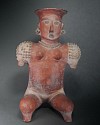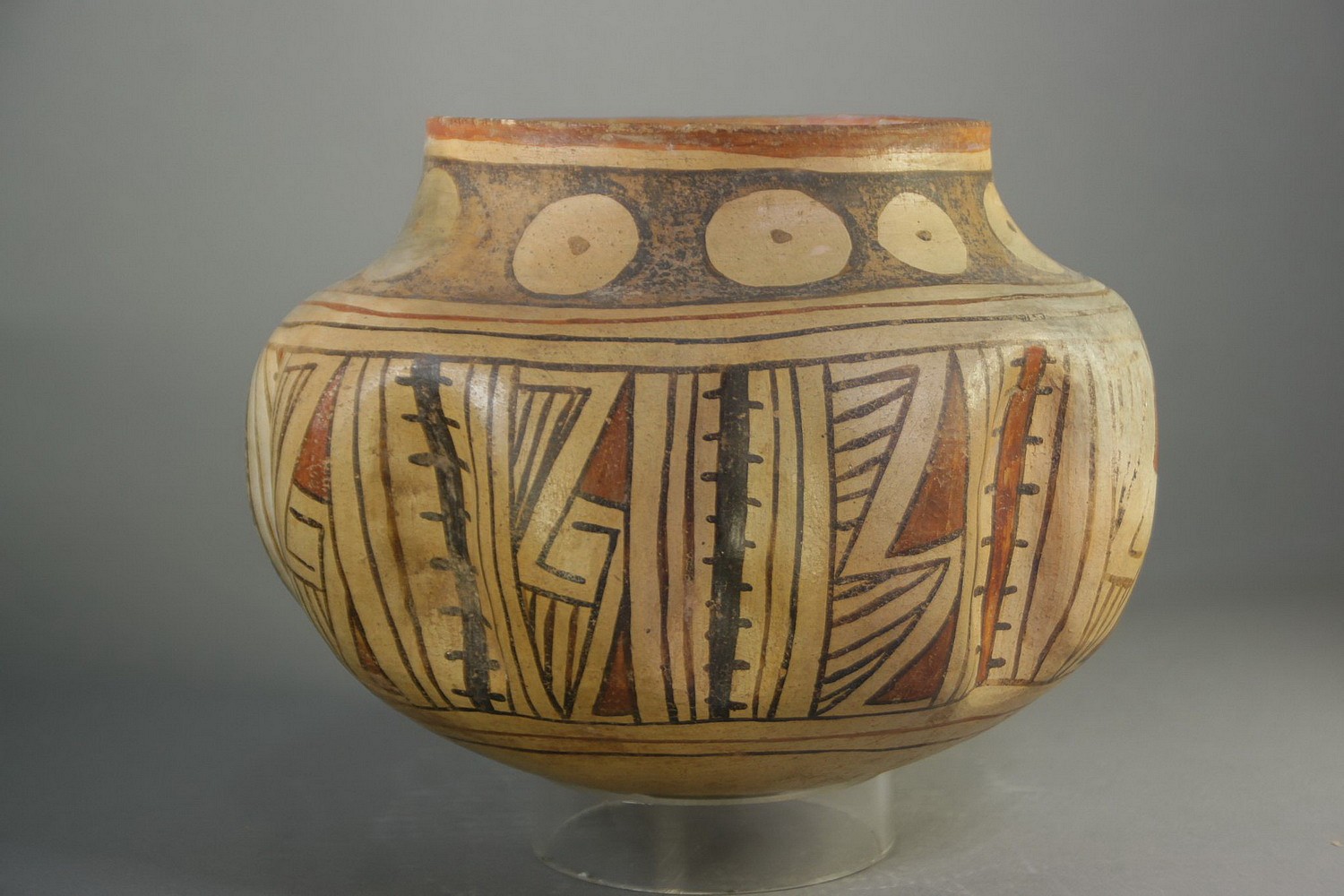




Mexico, Casas Grande Gadrooned Ceramic Vessel with Geometric Designs
This unusual ceramic bowl has nine fluted sections separated by symbolic cacti imagery. The bowl is painted with red and black geometric designs on a beige ground. On the bottom are three large concentric black lines. It has a tapered neck that is decorated with nine beige circles on a black ground. Each circle has a central black dot, which symbolizes an aerial view of a cactus. This vessel originates from Casas Grande, a site located in the Mexican state of Chihuahua, along the Casas Grande River and South of the US Puebloan ruins. A good reference is “Casas Grandes and the Ceramic Art of the Ancient Southwest†by Richard Townsend, published by the Art Institute of Chicago. The bowl is in good condition with one crack on the bottom restored and a small hole on one of the fluted sections. All parts original.
Period: Mexico, Casas Grande Classic Period c. AD 1250 - 1475
Media: Ceramic
Dimensions: H. 6" x W. 8"
$2,900
n2046







Mexico, Colima Seated Ceramic Sculpture of a Female
This seated female wears a necklace and earspools. She is adorned with shoulder pellets and has short arms that end with stubs in place of hands. The pellets may represent armor intended as protection for a person with short arms. Female figures in Pre-Columbia may have been linked to concepts of the earth and fertility and are thought to represent initiated women ready for marriage and childbirth. Usually, these figures appear to be disengaged from daily life. Similar style Coahuanyana Valley figures are in the collection of the Fowler Museum at UCLA, and The Arizona State Museum of Natural History. Ex-collection Hiroshi Miura, Tokyo, Japan acquired prior to 1970's.
Period: Mexico, Colima, Coahuanyana Valley, Classic Period, c. 100 BC - AD 400
Media: Ceramic
Dimensions: Height: 15.5"(38cm) x Width: 10"(22cm)
Price Upon Request
p1055
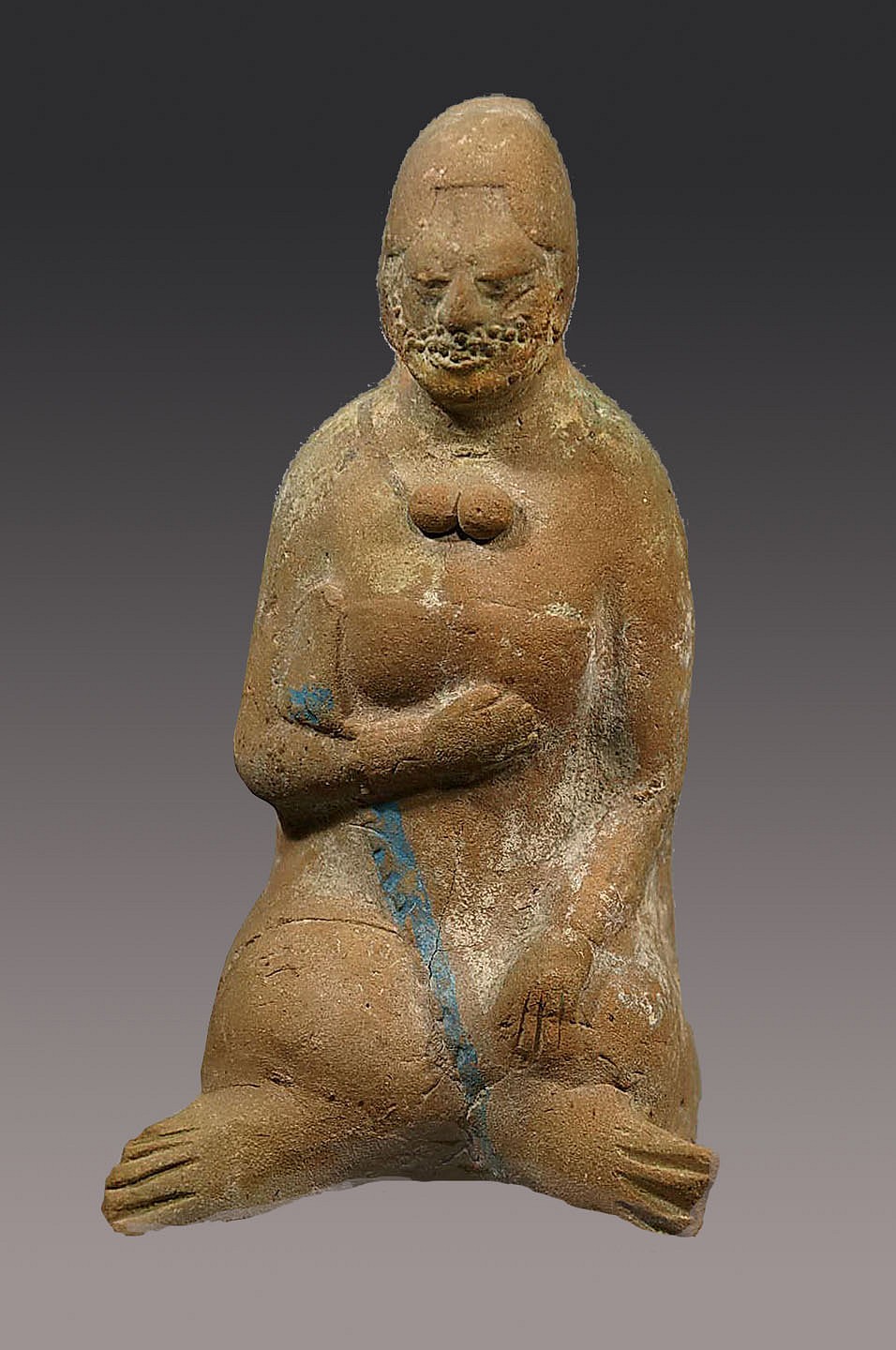



Mexico, Jaina Ceramic Efiigy Whistle of a Seated Woman
This cast ceramic whistle depicts a lady with a tattooed face, holding her hand to her breast. Post-fire blue pigment outlines the edge of her huipil, which was knotted on the upper right side of her chest.
Mold-cast figurines are thought to be later than solid hand modeled examples. Jaina Island, off the coast of Yucatan, was used as a cemetery for high-ranking nobles from the mainland.
Period: Mexico, Classic Maya, c. AD 400 - 800
Media: Ceramic
Dimensions: Height: 7"
Condition: With a minor chip on the right foot.
Price Upon Request
88167
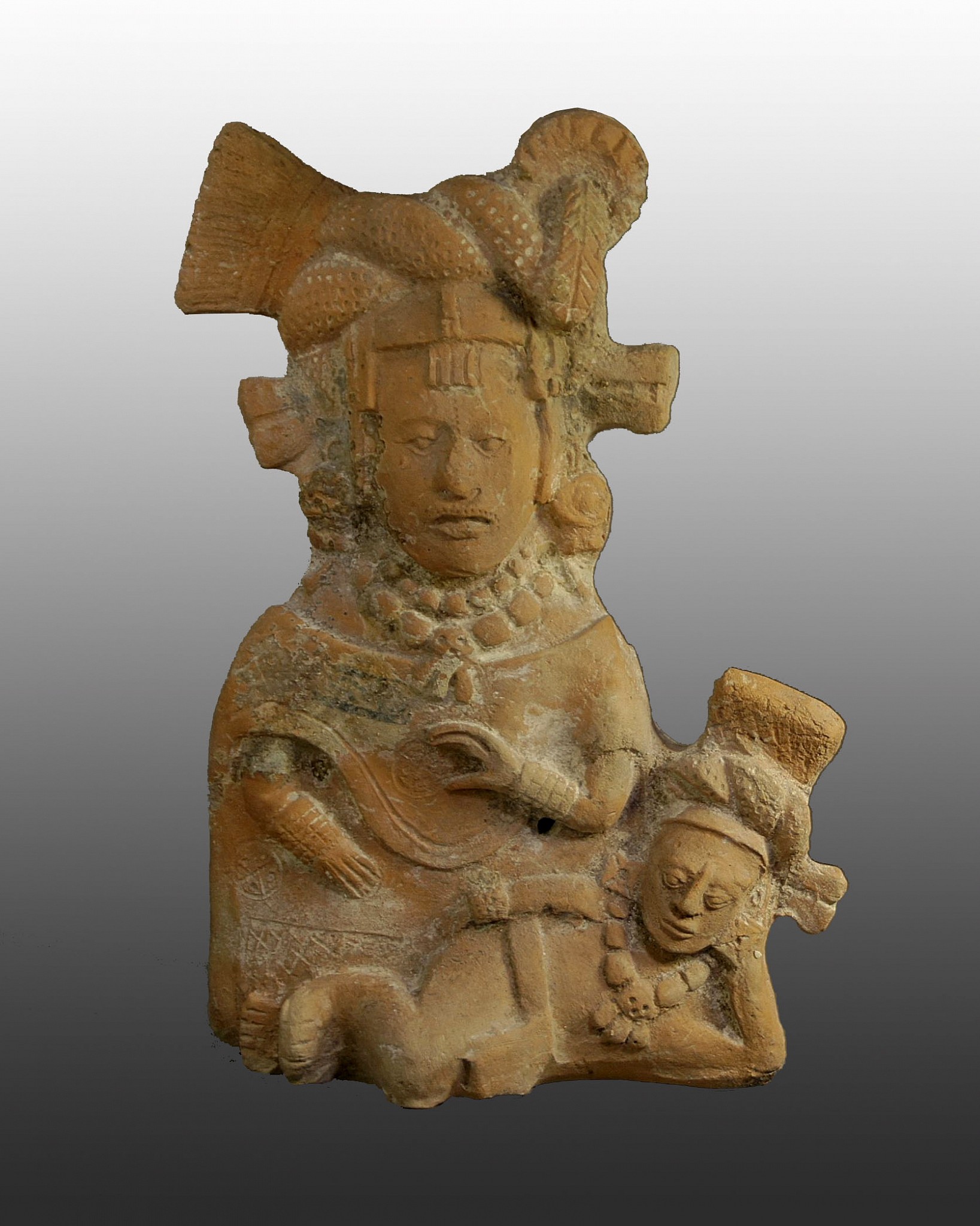





Mexico, Mayan Ceramic Figural Rattle of A Female Figure with Child
This high-ranking noble Jaina female wears a cloth and feather turban, ear spools, a heavy beaded collar piece and a slip-on quexquemitl over a skirt decorated with roundels and cross-hatching around the hem. Her face has a discreet scarification pattern in the center of the forehead and around the upper lip. The male child lying at her feet has a similar turban, beaded necklace, and a simple loincloth. Jaina-style figurines were exchanged along a 500 mile trade route. These figurines were hand-modeled with hollow, mold-made bodies, and joined to plain backs made by hand or molded. This figure can function as a whistle, flute, or rattle. For the Maya, enabling figurines to make sound animated them with the essence of life: air.
Period: Mexico, Jaina, Jaina Island, c. AD 400 - 700
Media: Ceramic
Dimensions: Height: 8 1/2"
Price Upon Request
N6011
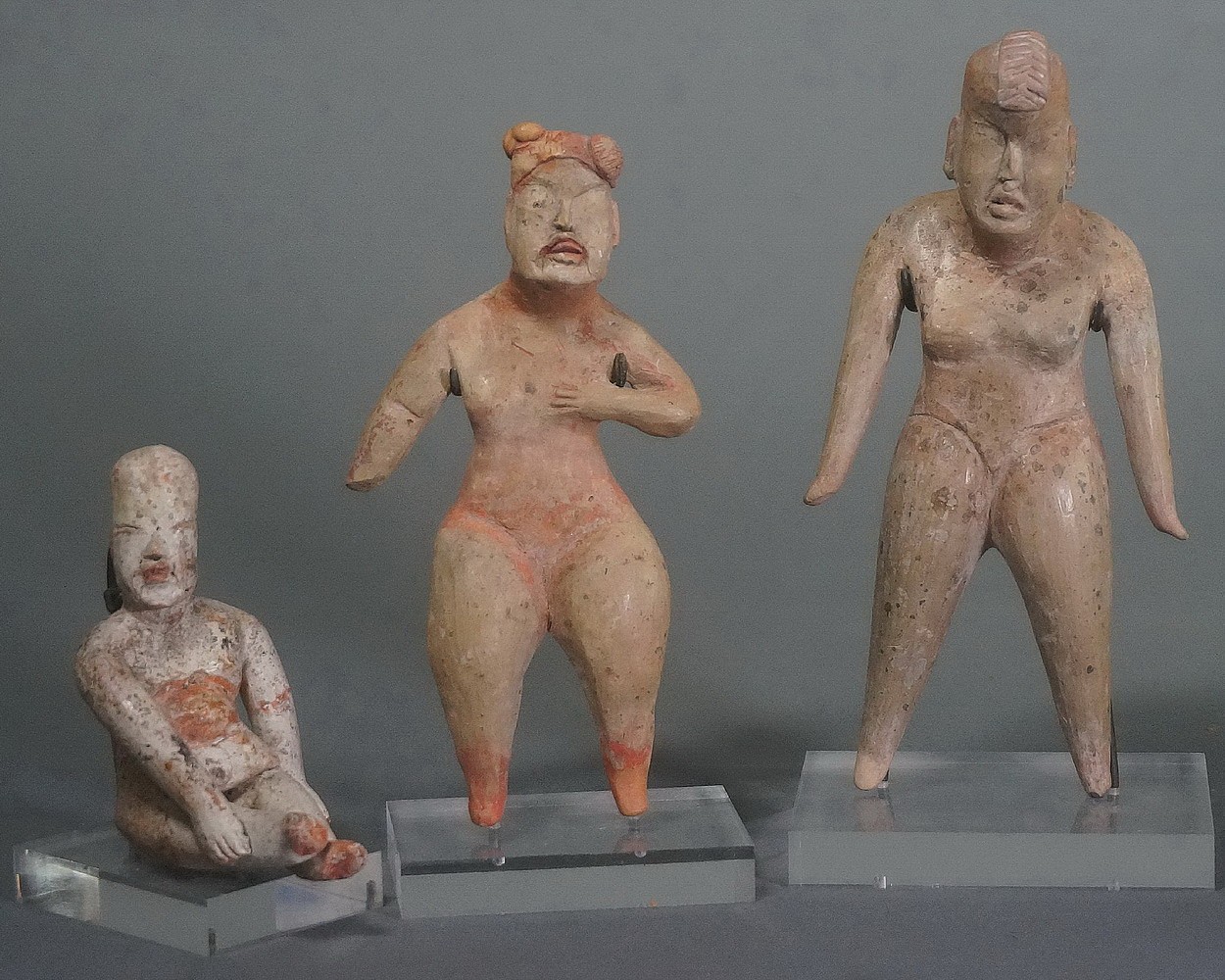






Mexico, Set of 3 Olmec Ceramic Figurines
These three figurines were exhibited together at Taguchi Fine Art in Tokyo and are illustrated in “JAGUAR'S CHILDREN: The Art of The Olmec,†May 7 - June 30, 2007. From left to right: seated cross-legged female with kaolin and cinnabar, standing eyeless female figure with traces of cinnabar, and standing figure with traces of kaolin slip.
Period: Mexico, Olmec, Las Bocas, Puebla c. 900 - 600B.C.
Media: Ceramic
Dimensions: Height: 6.9 cm, 12 cm, and 13 cm.
Price Upon Request
n7064

